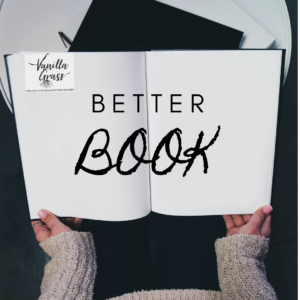You’ve put your main character onto the cliff’s edge and your readers are simultaneously on the edge of their seats.

Your tension is sky high, which means you’re rocking this writing thing. But, you’ve written it so well that not even YOU know how he’ll save himself.
What do you do? Shelf the story?
No!
This is what you want!
Push forward like Jennifer A. Nielsen and make a list of ways you can move the story along. She suggests a list of ten, but if those seem too bland list forty. Here are 11 ideas to open your mind to the possibilities:
#1 Other Characters
What if your character is stuck in a tree with a bear swatting at his feet and then his fiancé comes tromping through the woods, guns blazing? Does this help? Or does this make the situation worse?
Be careful not to pull this character out of the sky though, or else it will feel too much like deus ex machina.
But if the fiancé has been doing her hair in the campground bathroom after a couple’s fight, while your MC went foraging for berries to cool off, then we’ll expect her to at least show up. You’ll just have to set up the guns in advance as well.
Of course, if both elements are well established, it can set us up for a really tense scene where the inevitable “fiancé coming to save the day” would be super fulfilling for the reader.
Also consider that,
September C. Fawkes
#2 “What if they’re witches?”
My friend posed this question to a contemporary YA writer at one of my critique groups. Needless to say, we were all like:

But this is a great question to ask yourself. Are you writing the right genre? Would changing some of the basic understanding of the story concept add way more interest? If so, would that change what would happen next?
Be careful not to bait and switch your readers though. If it’s going to have witches, the readers should know that it is a fantasy story through many hints, observations, and descriptions from page one.
Overall, completely changing the way you look at your story can help you see some scenarios that would help your character escape or change the situation they’re in.
#3 Natural disasters
Whether it be a well timed downpour or a dangerous storm on the water, nature does come in handy often.
We want our worlds to be fully fleshed out, so having nature elements adds realism to our stories.
However, as in all of the cases above, be careful not to only have this element in the one scene you need it. Either build up to it or have it be a working element in the story, if this is the route you want to pursue. We don’t want to feel the author’s hand, we want it to come to the story organically.
#4 Tools on hand used creatively

If your character has a ball of string, some bubble gum, and a walking stick, can she use any of these to creatively solve her problem? Maybe she can use them as a distraction? A weapon? Maybe she can create something and Macguyver her way out of the situation. The key is to look at what you’ve already written into the story, take mental note of the things that are available to the character, and utilize them to their fullest.
#5 Character quirks
What is a way that ONLY your character would get out of a situation? Rapunzel is stuck on a cliff with the cavalry closing in. What does she do? Smack someone with a frying pan and swing her super long hair as a rope to cross the cavern, obviously.
Of course, anyone can hit someone with a frying pan, but it’s a tool that is introduced at the beginning of the story as being fairly unique to Rapunzel’s character. Swinging across the cavern using her hair though? Even more brilliant use of a character quirk AND it’s something ONLY she can do.
#6 Character fears

Think Detective Monk. He gets into some sticky situations because of his fear of germs, which ends up both working in his favor or working against him, but over and over the fears are what get him to see the crime scene with new eyes. Setting up these fears is a fantastic way to not only make them uncomfortable, but to propel your story forward.
How does your character react when faced with said fears? Are they a fight or flight kind of character? Their reactions could make some very interesting things happen in the story.
And as usual, use caution. This cannot come out of nowhere if you want it to be fulfilling.
#7 Use your set up
Again, what have you already written that can be helpful in this situation? Think back to every little nuance of other characters and elements. Can they be looked at differently?
Is the secret agent really a double agent or maybe just painfully shy and doesn’t talk to anyone? The little dog that was yapping in the neighbors house could get loose and cause havoc. What elements are already apparent that you just haven’t thought about? Maybe a quick read through will help you see things in a different light.
#8 Words or dialogue
Can the character say something to get himself out of this situation? In some situations the answer is no. But perhaps words can change the situation, or at least the way the characters view the situation.
Again, this will need a good amount of setup, but the nice thing is, that in drafting mode you can go back and add elements pretty easily.
#9 Magic systems
There have been full classes taught about magic systems, but utilizing a magic system gives both ideas and limitations. The fun is figuring out how to use the boundaries of the magic system to make things happen in a cool way. Again, make lists to utilize the magic in your world to help you work through the regular ideas and get to the cool stuff.
Make sure the boundaries and rules of the magic are clearly specified and stick to them. Fantasy readers are not typically forgiving when these rules are bent to make a scene work properly. Be consistent and you will have fans for life.

#10 Death
I mean, death happens to everyone, so it’s always an option. However, it should only be used if it will push the action or motivations of the story along. Unless, of course, a character is really annoying and just deserves to die. Luckily in fiction, you aren’t breaking any laws by taking this route. It would be best though, if there are ramifications of said action.
#11 Turn to outside resources
If your brain simply won’t think anymore, turn to outside resources that aren’t connected to the story, like you have today.
More ideas:
- Critique Groups
- Brainstorming partners
- Little kids (my personal favorite)
- Comedians
- Social Media
- Other blog articles that explore writer’s block
- READING
Remember, all progress (even if it’s deleted words), is forward progress. You’ll explore things that may not work right now, but may help in future scenes or stories. Just getting words on the page helps you gain experience and that, my friends, creates better stories. Keep writing! You’ve got this!





